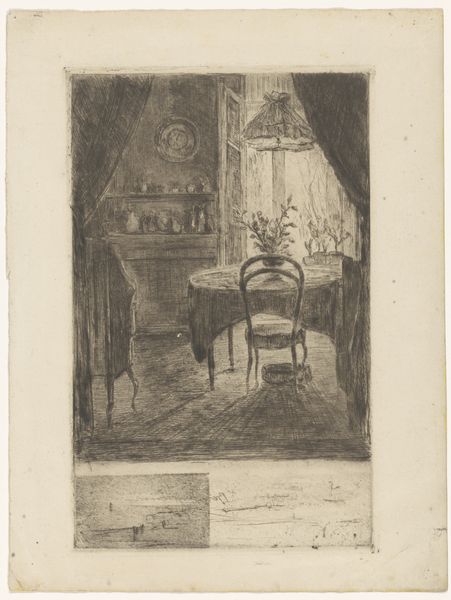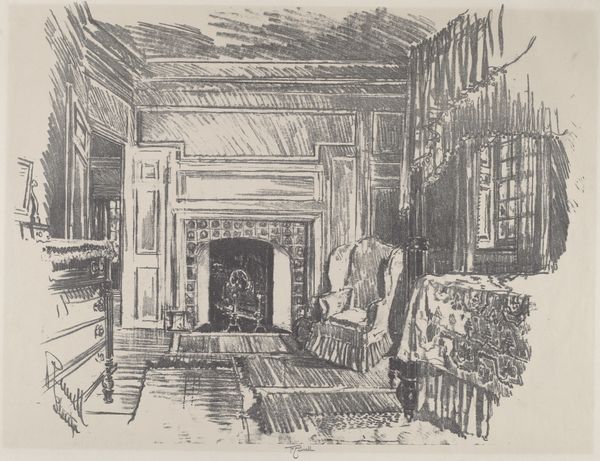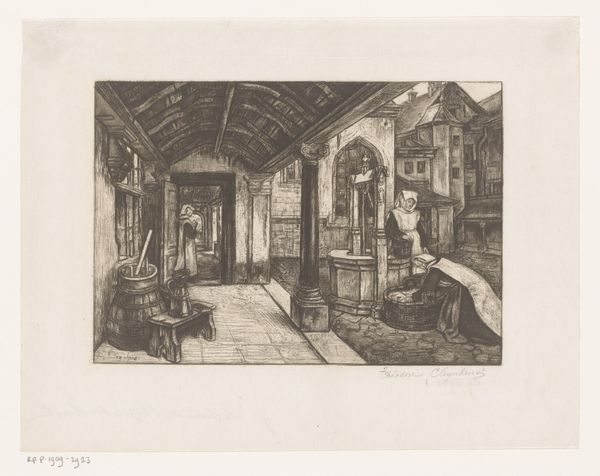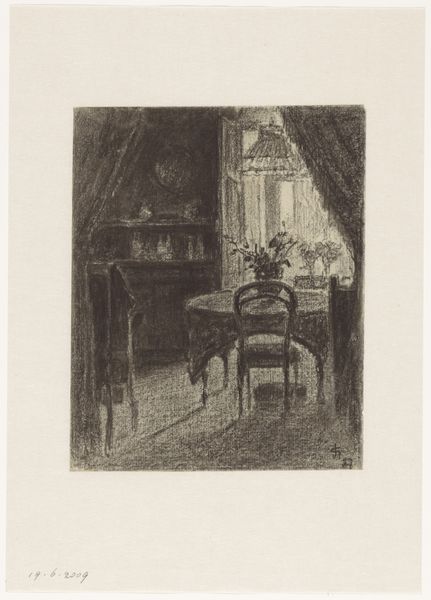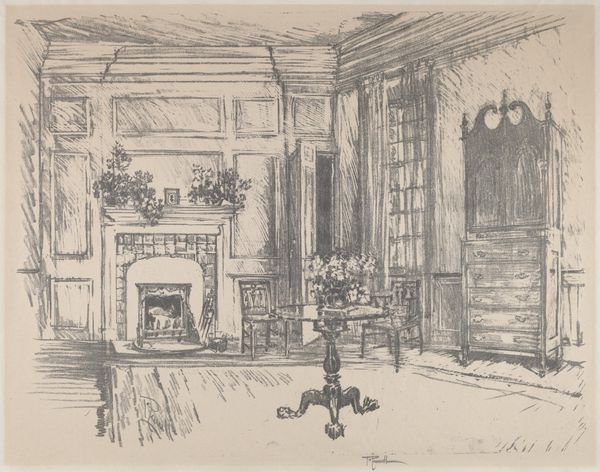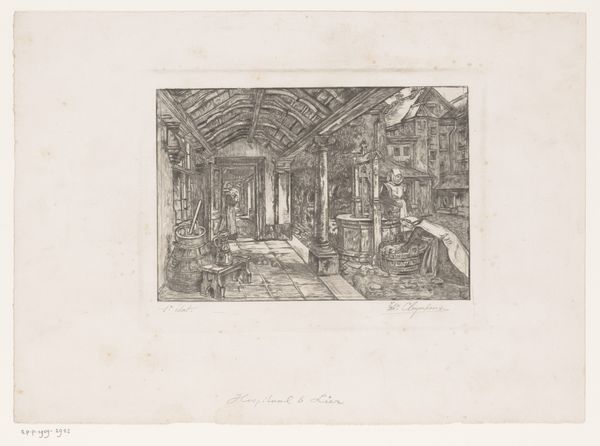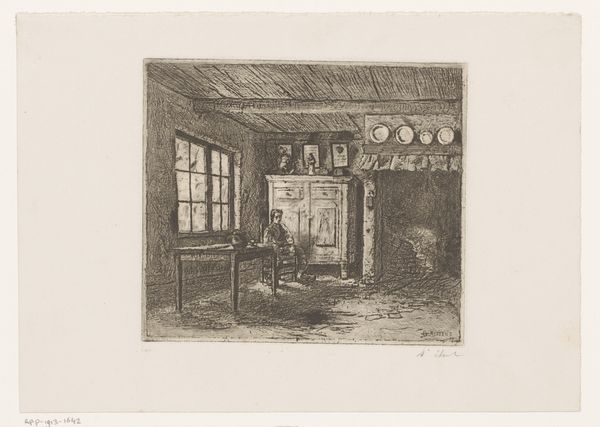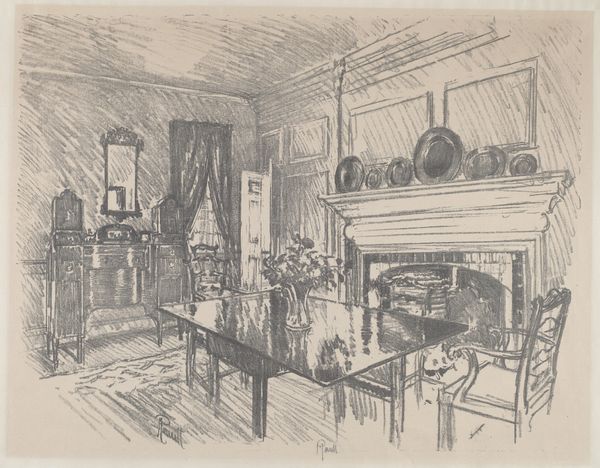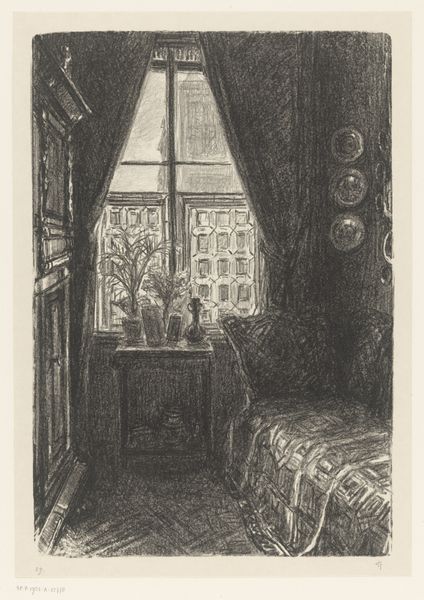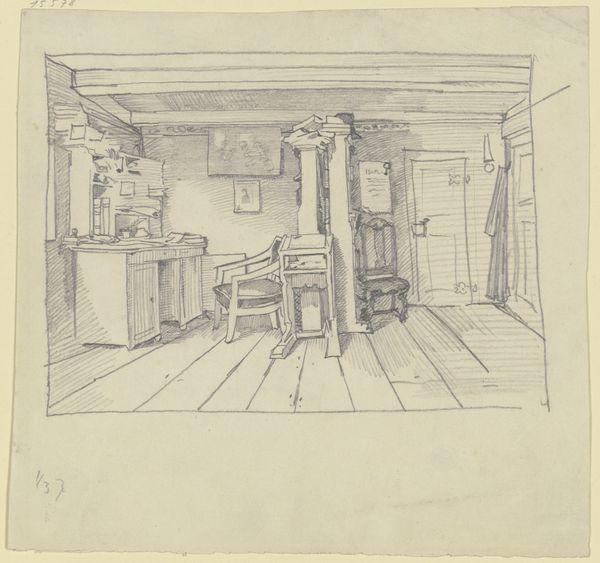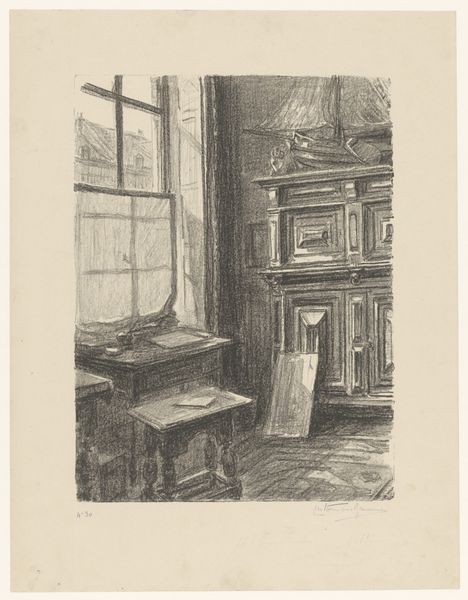
Dimensions: height 178 mm, width 236 mm
Copyright: Rijks Museum: Open Domain
Curator: Here we have Henri Kervyn van Lettenhove's "Interieur van een woonkamer," created in 1879, a print composed of etching, ink, and pencil on paper. What's your first impression? Editor: Cramped, in a charming way. Like stepping back in time and finding yourself in someone's very cluttered, but lovingly rendered, parlor. It’s almost claustrophobic but the light from the window pulls you in. Curator: Indeed. It's interesting to consider the labor involved. Etching, with its reliance on acid and precise timing, speaks to a specific printmaking culture of the period. The addition of ink and pencil suggests a layering of techniques, perhaps driven by cost or the desire for unique detail. This was before mass reproduction truly took hold. Editor: The cross-hatching everywhere—look at the floor—creates so much depth with seemingly simple strokes! I wonder what sort of conversations or secrets those walls hold. Or what kind of person feels comfortable amidst such patterned chaos? Perhaps someone who finds comfort precisely within layers. Curator: Consider the patterned wallpaper itself. Its proliferation in the 19th century points to the rise of industrial production making previously elite materials accessible to a growing middle class. This interior becomes a site of consumption and display. Editor: I am drawn to that table at the center, all the objects atop it. It becomes almost a self-portrait of sorts, rendered through accumulated possessions instead of facial features. Wouldn't it be fascinating to be able to reconstruct the stories of those objects, from teacups to decorative pieces? Curator: Absolutely. The objects point to specific cultural rituals and social status. Analyzing the materials -- porcelain, glass, metals -- we gain insight into trade routes and the access to resources. Were these locally sourced materials or the product of colonial exploitation? Editor: Makes me think about how spaces themselves tell stories through the objects within them. I like to believe in objects holding energy. It gives a very rich narrative, you know. I can imagine someone curling up next to that fire to tell the perfect fireside ghost story, with objects scattered across the parlor. Curator: I agree, the narratives emerge at the intersection of material realities and lived experiences. A truly fascinating insight into its era, capturing more than just aesthetic tastes of the upper middle class, as it also demonstrates emerging capitalist trends. Editor: Seeing it from these multiple angles changes the way I understand it; like turning over a memory stone to see if anything different appears on its reverse.
Comments
No comments
Be the first to comment and join the conversation on the ultimate creative platform.
